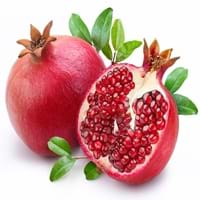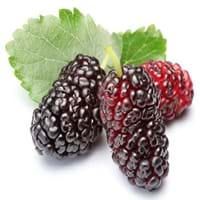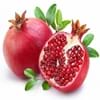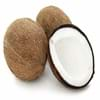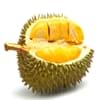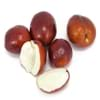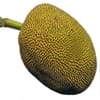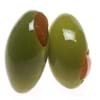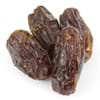Health Benefits
Cancer prevention, Heart care, Helps in cartilage regeneration, Improves stomach health, Increase in haemoglobin, Increases metabolic rate, Prevents constipation
Anti-aging benefits, Boosts immune system, Cancer prevention, Flu treatment, Hair care, Heart care, Improves eye vision, Increases metabolic rate, Kidney stone treatment, Maintains healthy cholesterol level, Skin cleansing, Skin rejuvenation, Treatment of common cold, Treatment of skin Diseases
General Benefits
Boosts immune system, Controls blood pressure, Controls blood sugar levels, Digestive aid, Maintains healthy cholesterol level
Boosts immune system, Controls blood sugar levels, Flu treatment, Improves eye vision, Maintains healthy cholesterol level, Treatment of common cold
Skin Benefits
Anti-aging benefits, Skin rejuvenation, Treatment of acne
Anti-aging benefits, Skin cleansing, Treatment of skin diseases
Hair Benefits
Prevents hair loss, Promotes longer and healthier hair, Treatment of dandruff
Protects hair, Regulates hair growth
Allergy Symptoms
Abdominal pains, Anaphylaxis, Itching
Breathing difficulty, Itching, Nasal congestion, Redness of eyes, Runny nose, Sneezing
Side Effects
Allergic reaction, Cold, Breathing difficulty, Irritation, Swelling
Decrease in blood sugar levels, Allergic reaction
Best Time to Eat
Best if taken as a breakfast (or empty stomach), As a snack in the late afternoon, Eat the fresh ones, avoid mixing with any other foods, don't eat after meal., Morning time (before lunch)
Best if taken as a breakfast (or empty stomach), As a snack in the late afternoon, Don't consume at night and before bed, Eat the fresh ones, avoid mixing with any other foods, don't eat after meal., Morning time (before lunch)
Vitamin B5 (Pantothenic Acid)
Not Available
Vitamin C (Ascorbic Acid)
Vitamin K (Phyllochinone)
Calories in Fresh Fruit with Peel
Not Available
Calories in Fresh Fruit without Peel
Not Available
Calories in Frozen Form
Not Available
Calories in Canned Form
Not Available
Not Available
Season
Autumn
Spring, Summer
Varieties
Balegal, Crab, Cloud, Francis, Freshman and Granada
Charparral, Pendula, Teas, Bellaire and Lingan
Color
Dark red, Light pink-red
Pink, Purple, White
Soil Type
Clay, Sand
Clay, Loam
Climatic Conditions
Cold, Dry, Hot
Sunny
Facts about
- Pomegranate means apple with many seeds.
- It was called as the “apple of Grenada” in early English.
- In Hinduism, this fruit symbolizes prosperity and fertility.
- Pomegranate trees can live upto 200 years.
- It can take up to 10 years for a tree to produce mulberry fruit.
- Mulberry leaves are fed to silkworms to enhance silk production.
- In Germany, they say that devil uses root of mulberry tree to polish his boots.
Other Countries
Africa, India, Middle east, Pakistan
Colombia, Egypt, India, Indonesia, Kenya, Mexico, Pakistan, Peru, Russia, United States of America
Top Importer
Europe
Not Available
Botanical Name
Punica granatum
Morus Alba
Synonym
Punica malus
Morus atropurpurea or Morus multicaulis
Subkingdom
Tracheobionta
Tracheobionta
Division
Magnoliophyta
Magnoliophyta
Class
Magnoliopsida
Magnoliopsida
Subclass
Rosidae
Alismidae
Family
Lythraceae
Moraceae
Species
P. granatum
M. alba
Generic Group
Pomegranate
Mulberry
Difference Between Pomegranate and Mulberry
We might think that Pomegranate and Mulberry are similar with respect to nutritional value and health benefits. But the nutrient content of both fruits is different. Pomegranate and Mulberry Facts such as their taste, shape, color, and size are also distinct. The difference between Pomegranate and Mulberry is explained here.
The amount of calories in 100 gm of fresh Pomegranate and Mulberry with peel is Not Available and 43.00 kcal and the amount of calories without peel is 83.00 kcal and Not Available respectively. Thus, Pomegranate and Mulberry belong to High Calorie Fruits and Low Calorie Fruits category.These fruits might or might not differ with respect to their scientific classification. The order of Pomegranate and Mulberry is Myrtales and Rosales respectively. Pomegranate belongs to Lythraceae family and Mulberry belongs to Moraceae family. Pomegranate belongs to Punica genus of P. granatum species and Mulberry belongs to Morus genus of M. alba species. Beings plants, both fruits belong to Plantae Kingdom.
